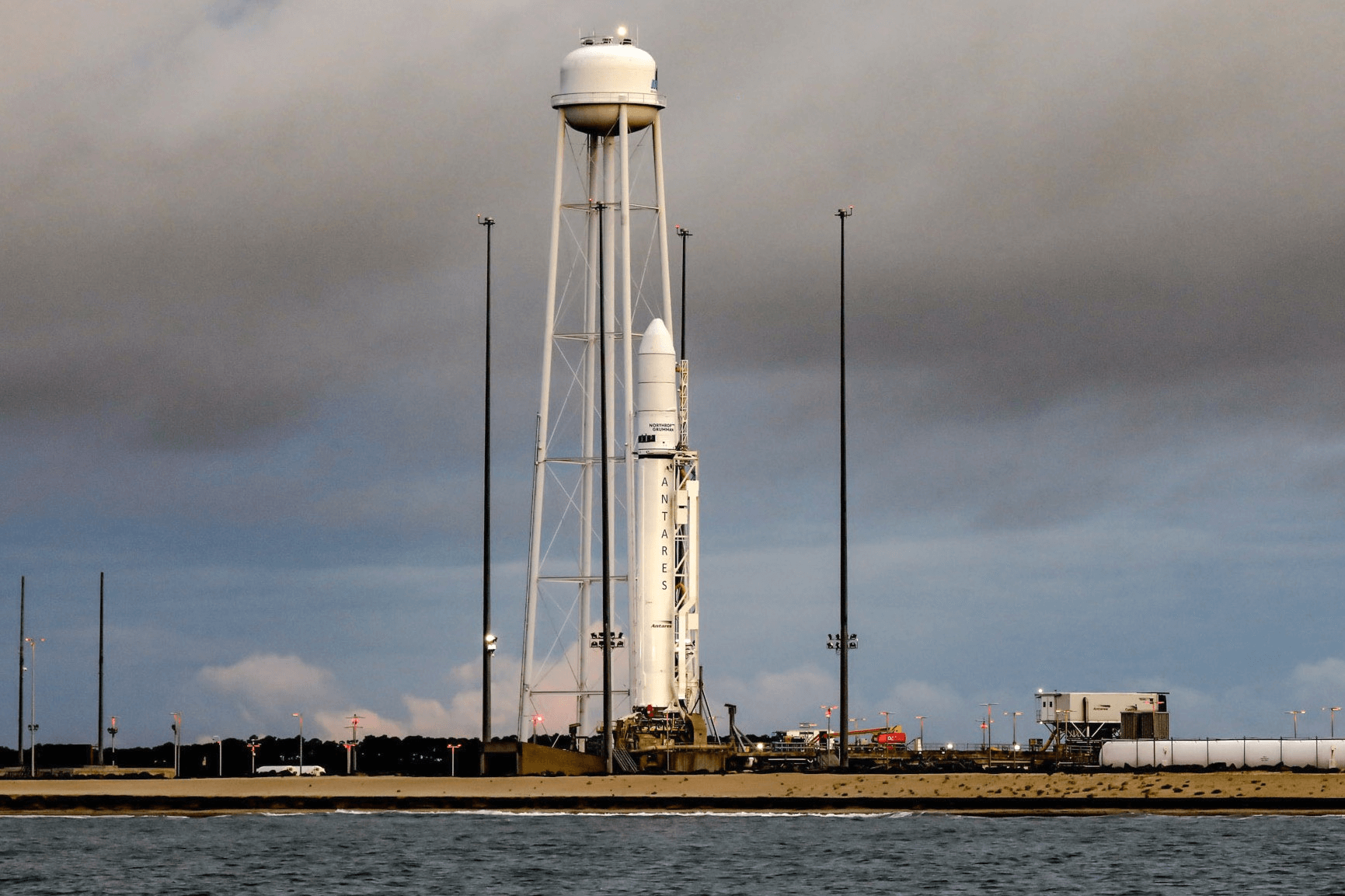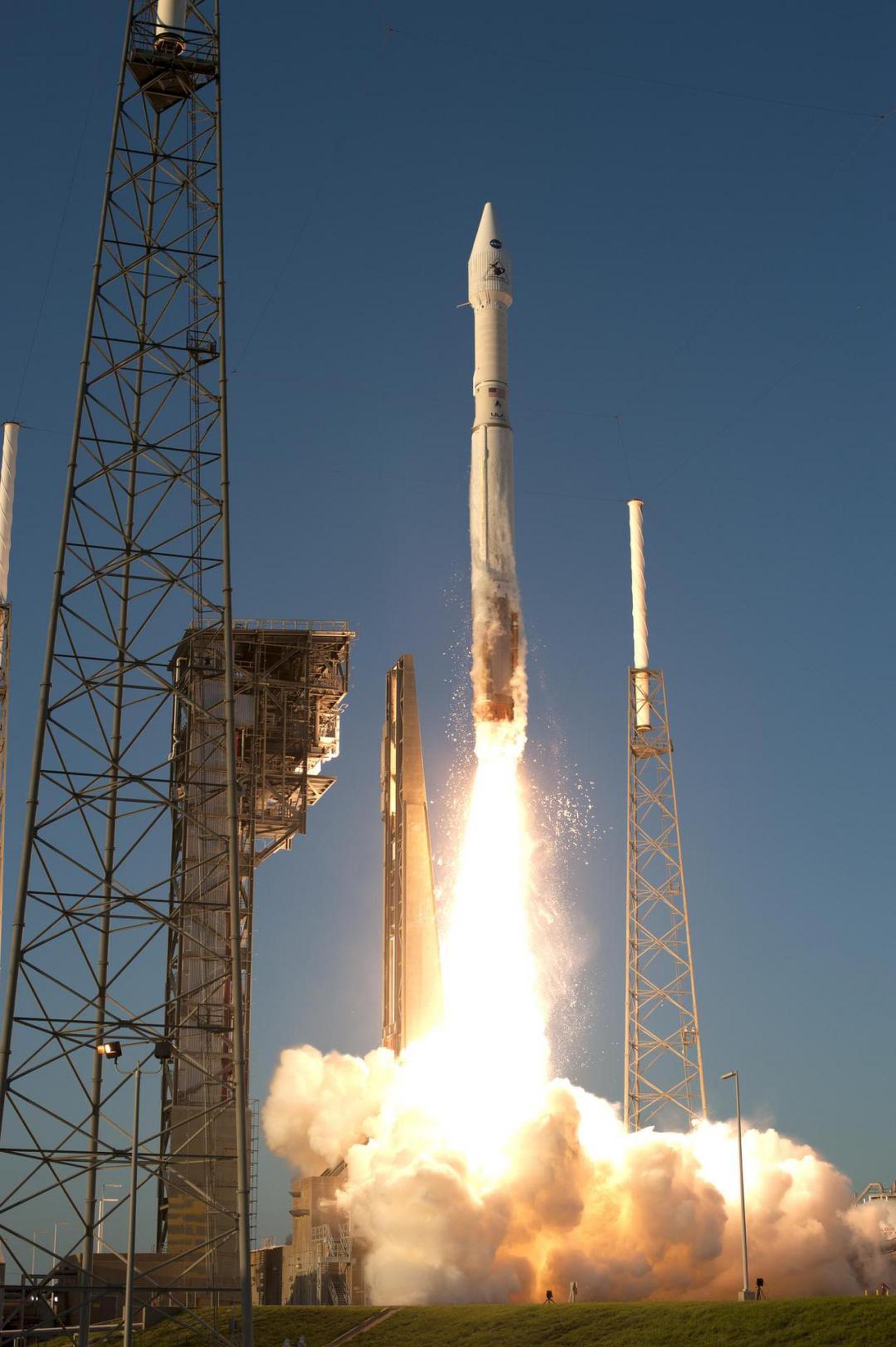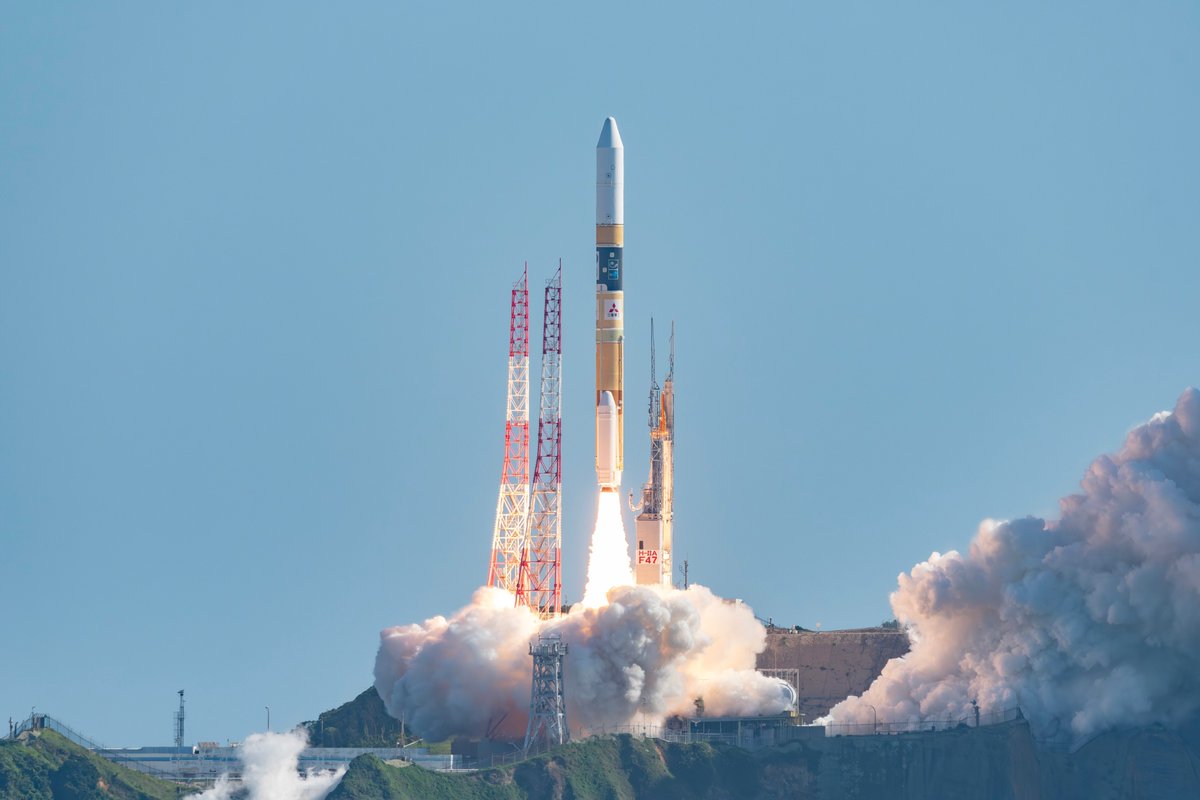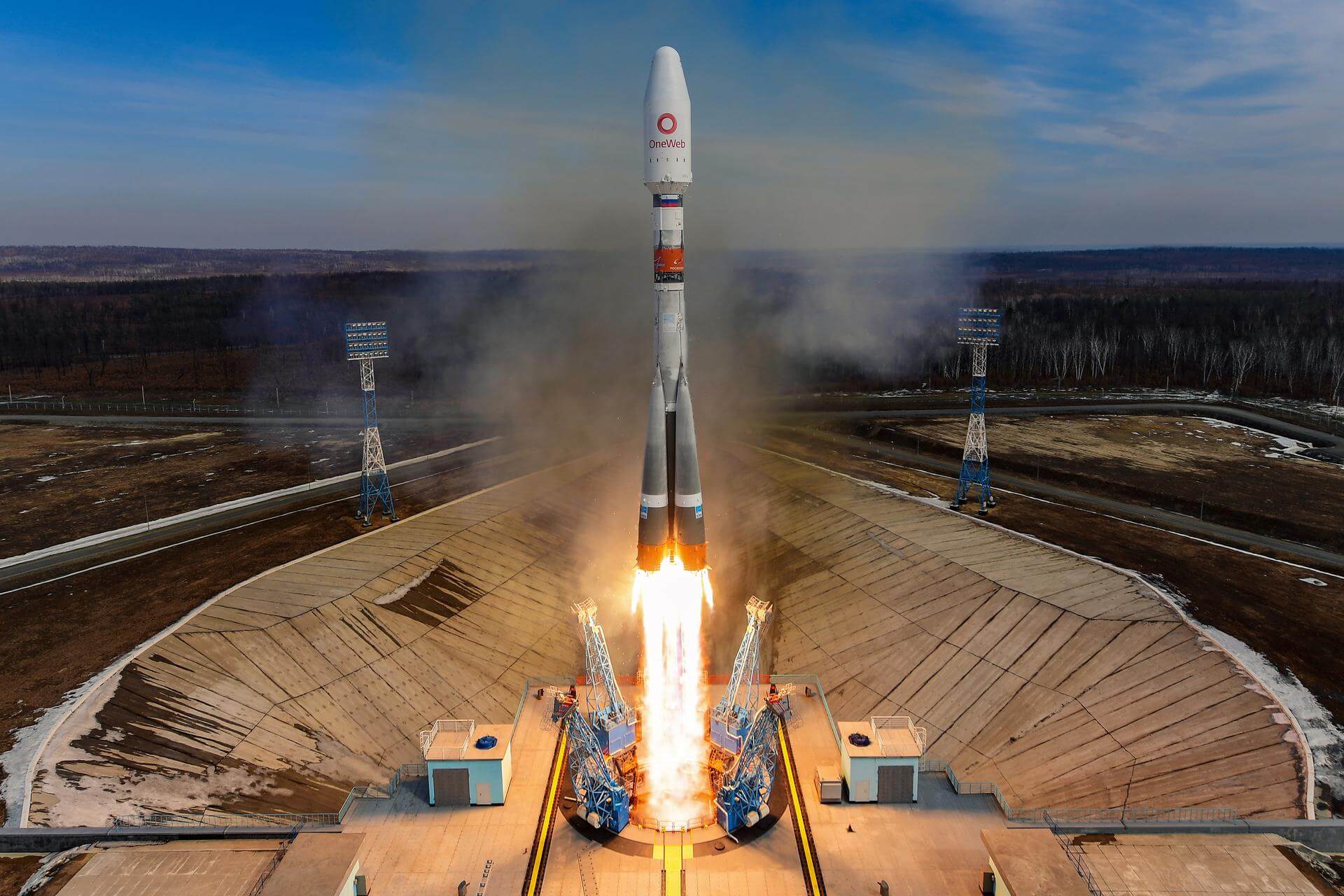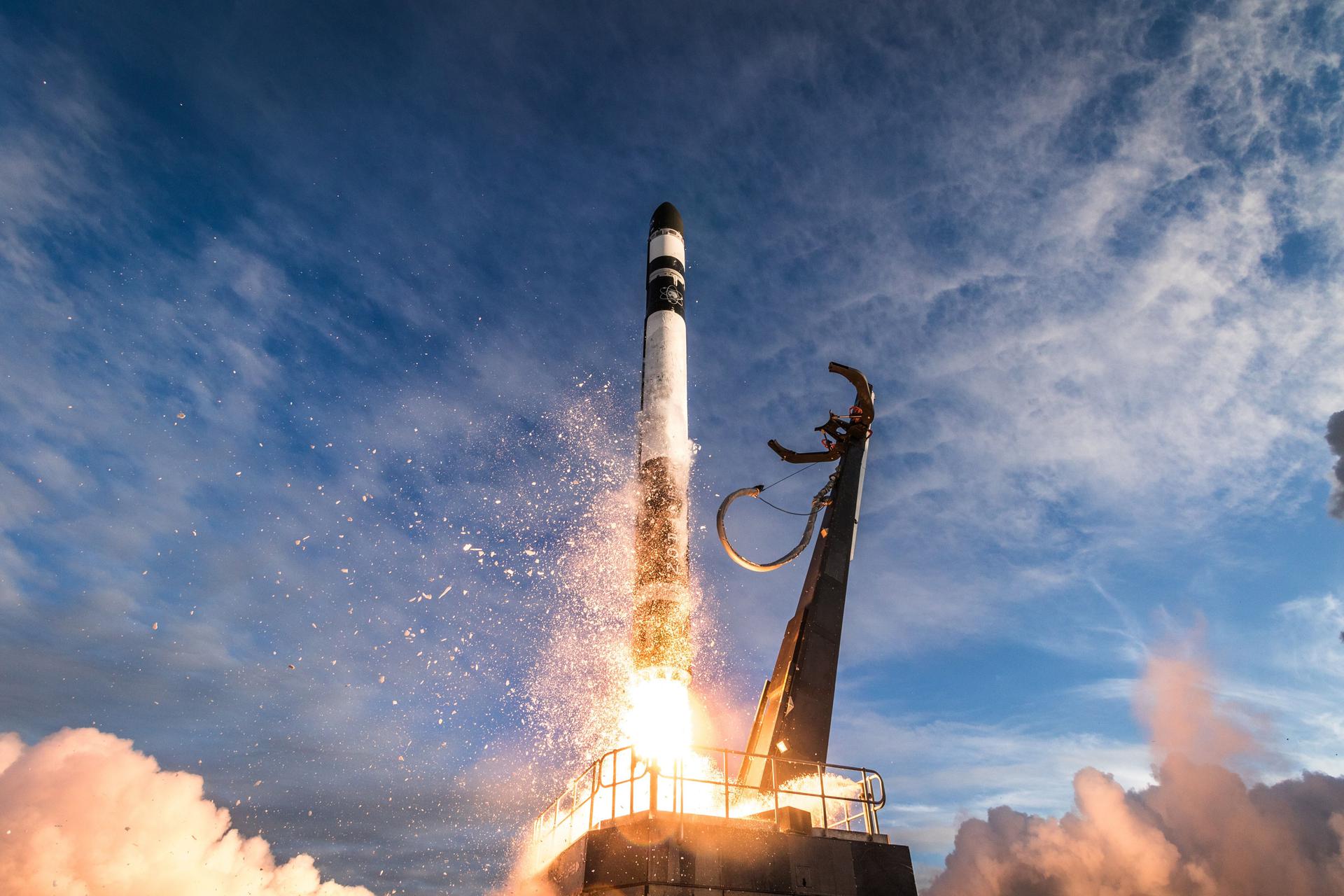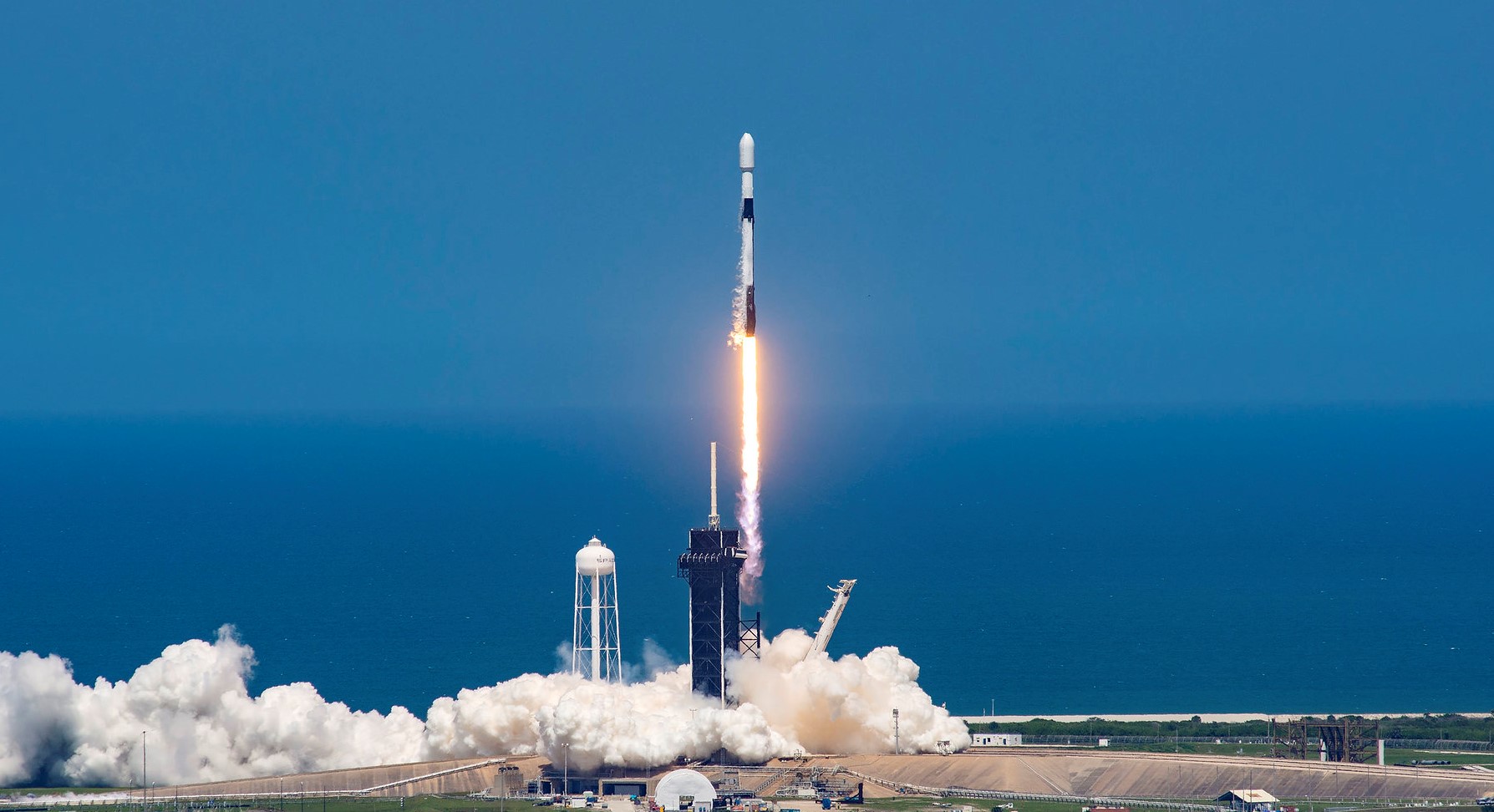Previous Spaceflight Launches
Filter by Agency, Locations or Vehicles
Show All LaunchesAriane 5 ECA+ | JCSAT-17 & GEO-KOMPSAT-2B
ArianeGroup | FranceGuiana Space Centre, French Guiana
Feb. 18, 2020, 10:18 p.m.
Status: Launch Successful
Mission:
JCSAT-17 is a Japanese communication satellite of SKY Perfect JSAT Corporation. Its payloads incorporate S-band, C-band and Ku-band transponders, which will provide satellite communication services. The S-band and C-band transponders will serve NTT DOCOMO, Inc., the largest telecommunications company in Japan, for its flexible mobile communications services in Japan and the surrounding region under IRU contract (Indefeasible Right of Use). SKY Perfect JSAT will support NTT DOCOMO’s satellite communication services. JCSAT-17 also includes a flexible processor that will allow SJC to redirect capacity to concentrate on disaster relief efforts or other high-volume events. The GEO-KOMPSAT-2 program is a national program of the Korean government to develop and operate two civilian geostationary satellites sharing the same satellite bus: GEO-KOMPSAT-2A for meteorological and space weather monitoring missions; and GEO-KOMPSAT-2B for Earth environment monitoring and ocean monitoring missions. The GEO-KOMPSAT 2 program also ensures the succession for the COMS program (Communication, Ocean and Meteorological Satellite). The satellite carries two main payloads: GOCI II (Geostationary Ocean Color Imager II), provided by Airbus Defence and Space; and the GEMS (Geostationary Environment Monitoring Spectrometer), provided by Ball Aerospace & Technologies.
Geostationary Transfer OrbitFalcon 9 Block 5 | Starlink 4
SpaceX | United States of AmericaCape Canaveral SFS, FL, USA
Feb. 17, 2020, 3:05 p.m.
Antares 230+ | Cygnus CRS-2 NG-13 (S.S. Robert H. Lawrence.)
Northrop Grumman Space Systems | United States of AmericaWallops Flight Facility, Virginia, USA
Feb. 15, 2020, 8:21 p.m.
Status: Launch Successful
Mission:
This is the 14th planned flight of the Orbital ATK's uncrewed resupply spacecraft Cygnus and its 13th flight to the International Space Station under the Commercial Resupply Services contract with NASA. Spacecraft carries the name of Robert Henry Lawrence Jr., honouring USA's first black astronaut.
Low Earth OrbitAtlas V 411 | Solar Orbiter
United Launch Alliance | United States of AmericaCape Canaveral SFS, FL, USA
Feb. 10, 2020, 4:03 a.m.
Status: Launch Successful
Mission:
Solar Orbiter is a joint ESA/NASA mission dedicated to solar and heliospheric physics. It will be used to examine how the Sun creates and controls the heliosphere, the vast bubble of charged particles blown by the solar wind into the interstellar medium. The spacecraft will combine in situ and remote sensing observations to gain new information about the solar wind, the heliospheric magnetic field, solar energetic particles, transient interplanetary disturbances and the Sun's magnetic field. Instruments include: * Solar Wind Analyser (SWA) * Energetic Particle Detector (EPD) * Magnetometer (MAG) * Radio and Plasma Wave analyser (RPW) * Polarimetric and Helioseismic Imager (PHI) * Extreme Ultraviolet Imager (EUI) * Spectral Imaging of the Coronal Environment (SPICE) * Spectrometer Telescope for Imaging X-rays (STIX) * Coronagraph (Metis) While mission is not intended to get as close to the Sun as Parker Solar Probe, it's designed to coordinate observations and has different set of instruments. Main mission starts after one and only Earth flyby in November 2021, and lasts until Dec 2026 when it enters extended phase. During the mission, Solar Orbiter will get through numerous Venus gravity assists, and its trajectory will be highly inclined allowing direct observations of Sun's poles.
Heliocentric N/A #SolOSimorgh | Zafar-1
Iranian Space Agency | IranSemnan Space Center, Islamic Republic of Iran
Feb. 9, 2020, 3:45 p.m.
H-IIA 202 | IGS Optical 7
Mitsubishi Heavy Industries | JapanTanegashima Space Center, Japan
Feb. 9, 2020, 1:34 a.m.
Status: Launch Successful
Mission:
Information Gathering Satellite (IGS) is a Japanese governmental spy satellite program. IGS Optical 7, as the name suggests, is an optical reconnaissance satellite. Japan began development of IGS in the late 1990s, following North Korea’s attempted satellite launch in 1998. Although the North Korean launch failed to reach orbit, the rocket carrying it crossed Japan during its ascent, sparking fears that North Korean missiles would be able to target the islands. With IGS, Japan aimed to develop an independent reconnaissance capability to monitor future threats. The constellation can also be used for disaster monitoring and other civilian applications by the Japanese government.
Sun-Synchronous OrbitSoyuz 2.1b/Fregat-M | OneWeb 2
Progress Rocket Space Center | RussiaBaikonur Cosmodrome, Republic of Kazakhstan
Feb. 6, 2020, 9:42 p.m.
Status: Launch Successful
Mission:
A batch of 34 satellites for the OneWeb satellite constellation, which is intended to provide global Internet broadband service for individual consumers. The constellation is planned to have around 648 microsatellites (of which 60 are spares), around 150 kg each, operating in Ku-band from low Earth orbit. Eventually it can be expanded to include extra 1260 satellites, for a total of 1908.
Polar OrbitElectron | Birds of a Feather (NROL-151)
Rocket Lab | United States of AmericaRocket Lab Launch Complex 1, Mahia Peninsula, New Zealand
Jan. 31, 2020, 2:56 a.m.
Falcon 9 Block 5 | Starlink 3
SpaceX | United States of AmericaCape Canaveral SFS, FL, USA
Jan. 29, 2020, 2:06 p.m.
Status: Launch Successful
Mission:
Second operational Starlink payload of 2020 and third overall. The Falcon 9 launch vehicle will carry a batch of 60 Starlink satellites that will be insterted in a Low Earth Orbit (LEO) at an altitude of 290 km (180 mi) and an inclination of 53°. They will then split into three orbital planes and raise their orbits to reach an operational altitude of 550 km (342 mi). The Starlink LEO constellation aims to provide worldwide affordable satellite internet access. 182 satellites (120 operational) have been deployed so far, the goal scheduled for the mid-2020s being 12,000 satellites in orbit, with a possible later extension to 42,000. The booster for this launch will be B1051, a Block 5 generation core which previously flew on SpaceX's Demonstration Mission 1 (first Crew Dragon test flight) and launched the Canadian Space Agency's RADARSAT Constellation.
Low Earth Orbit B1051 - Flight Proven ( ) Of Course I Still Love YouFalcon 9 Block 5 | Dragon In-Flight Abort Test
SpaceX | United States of AmericaKennedy Space Center, FL, USA
Jan. 19, 2020, 3:30 p.m.
Status: Launch Successful
Mission:
When the Falcon 9 Block 5 rocket reaches Max-Q (maximum dynamic forces), the launch abort system of the Crew Dragon spacecraft will be triggered. This will fire up its SuperDraco engines and propel the spacecraft and its theoretical passengers away from the launch vehicle before landing back safely in the Atlantic Ocean. The goal of this test is to demonstrate the capacity of the spacecraft to ensure a safe return to the ground for the astronauts in the event of a launch vehicle failure. The booster for this launch will be B1046, a thrice-flown core which was the first of the Block 5 generation. It will not attempt to land and is expected to be destroyed by the SuperDracos and aerodynamic loads.
Suborbital B1046 - Flight Proven ( ) Atlantic Ocean

